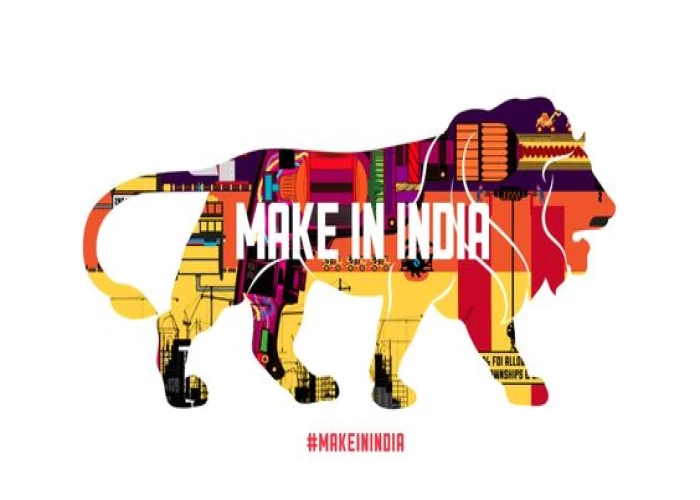
New Delhi: Make in India is making big strides, and how! As India continues to advance towards becoming a global manufacturing hub, the future looks promising. The nation's robust economic landscape, skilled workforce, and supportive government policies are attracting global majors and promoting an environment of innovation and growth. 'Make In India' is not just an initiative but a movement towards reclaiming India's historical glory as the 'Sone Ki Chiriya', setting the stage for a prosperous and powerful economy. A fine example is the advances made in the Defense sector.
The Ministry of Defence of the Government of India has recently launched the fifth Positive Indigenisation List (PIL) for Defence Public Sector Undertakings (DPSUs). This list includes 346 strategically important items, such as line replacement units, systems, sub-systems, assemblies, sub-assemblies, spares, components, and raw materials. The estimated import substitution value of these items is Rs 1,048 crore.
These items will now be sourced exclusively from Indian industries, following the timelines outlined in the list, accessible on the Srijan portal. Launched in 2020, the Srijan portal allows DPSUs and Service Headquarters (SHQs) to collaborate with industries, including MSMEs and start-ups, to promote the indigenisation of defence items. This initiative aligns with Prime Minister Narendra Modi’s vision of ‘Aatmanirbhar Bharat' to promote self-reliance in defence production.
The DPSUs will indigenise the items listed in the fifth PIL through various approaches, including the ‘Make’ procedure and in-house development in partnership with industry stakeholders, including MSMEs. This initiative is expected to stimulate economic growth, boost investment in defence, and reduce reliance on imports. Moreover, it aims to strengthen the design capabilities of India’s domestic defence industry by involving academia and research institutions.
Since its inception, over 36,000 defence items have been offered to the industry for indigenisation by DPSUs and SHQs, with more than 12,300 items successfully indigenised over the past three years. This proactive approach has resulted in DPSUs placing orders worth Rs 7,572 crore on domestic vendors, further strengthening the ecosystem for indigenous defence production in India.
At the beginning of July 2024, Union Defence Minister Rajnath Singh announced that India achieved the highest-ever growth in the value of defence production in 2023-24 and made significant progress under the Make in India initiative. Production values surged from the fiscal year 2022-2023 by 16.8% to Rs. 1,26,887 crores in FY 2023-2024.
Singh said that the Indian government aims to develop India as a leading Global Defence Manufacturing Hub. The Union Minister applauded the Make in India initiative for the growth in production and said it has been achieving milestones with each passing year under the leadership of Prime Minister Modi.
Launched in 2014 by Prime Minister Modi, 'Make In India' aims to transform the nation into a global manufacturing powerhouse by promoting investment, encouraging innovation, enhancing skill development, protecting intellectual property, and building world-class manufacturing infrastructure.
Within months of its launch, the initiative began focusing on four key pillars: New Processes, New Infrastructure, New Sectors, and a New Mindset. The cornerstone of 'Make In India' is the ease of doing business. The government embarked on a mission to de-license and deregulate industries, streamlining processes to make India a more business-friendly environment. These efforts included amendments in labour laws, the introduction of online filing of returns, and the rationalisation of regulatory frameworks, all aimed at reducing bureaucracy and promoting entrepreneurship.
Modern infrastructure is essential for industrial growth. The government has focused on developing industrial corridors and smart cities equipped with advanced technology and integrated logistics. Upgrading existing infrastructure in industrial clusters and enhancing the Intellectual Property Rights registration setup has further boosted innovation and research activities. This infrastructure development is designed to support the growing needs of various industries, ensuring a strong foundation for manufacturing.
'Make In India' has identified 25 key sectors, ranging from manufacturing and infrastructure to service activities, opening up new avenues for investment and growth. Notably, Foreign Direct Investment (FDI) has been liberalised in critical areas such as Defence Production, Construction, and Railway Infrastructure. This move has attracted global giants to set up operations in India, significantly enhancing the country's industrial capabilities.
A fundamental shift in the government's role from regulator to facilitator has been crucial in pushing forward the agenda of Make in India. By partnering with industry leaders and state governments, the initiative aims to create a collaborative environment for economic development. This paradigm shift was evident during the National Workshop on sector-specific industries in December 2014, where government officials and industry leaders came together to chart a roadmap for increasing manufacturing's contribution to 25% of the GDP.
The collaborative model of 'Make In India' has extended beyond national borders. For instance, in June 2024, Adani Defence and Aerospace signed an agreement with French defence company Thales to manufacture 70 mm rockets for helicopters under the Make in India and Aatmanirbhar Bharat programmes. This partnership highlights India's growing capability and confidence in producing high-quality defence equipment.
Prime Minister Modi's international engagements have further supported 'Make In India'. During a recent visit to Vienna, he urged Austrian businesses to leverage India's manufacturing opportunities. Highlighting India's strides in digital public infrastructure and the Production Linked Incentive (PLI) scheme, he showcased the nation's potential as a global supply chain destination. This appeal resulted in significant interest and investment from Austrian companies, demonstrating the global confidence in India's economic landscape.
India's deeptech sector, heavily reliant on semiconductors, has seen impressive growth, with funding rising from USD 1.3 billion in 2019 to USD 10 billion in 2023. Recognising the strategic importance of semiconductors, the government has prioritised investment in both semiconductor fabrication and assembly, testing, marking, and packaging (ATMP) facilities. Initiatives like the Design-linked Incentive (DLI) scheme support domestic companies engaged in semiconductor design, further strengthening India's position in the global tech landscape.
Government support has been crucial in driving the success of 'Make In India'. Subsidies covering 40–50% of the costs for setting up semiconductor fabs and significant investments in infrastructure have underscored India's commitment to self-reliance and global competitiveness. The development of a skilled workforce, with the goal of cultivating 20 lakh deeptech engineers by 2030, is a testament to the nation's long-term vision for sustainable growth.













